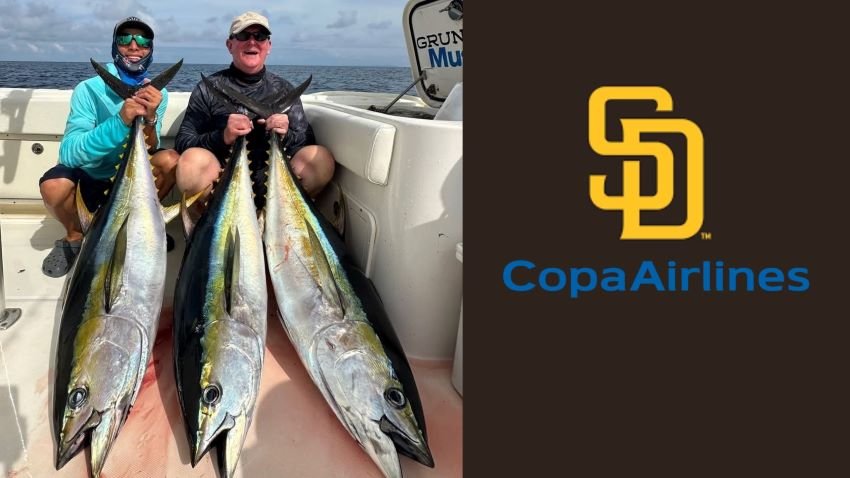“We Were on a Break”
After returning from a short trip up to Pennsylvania for smallmouth on July 25th, and then a quick mini college reunion in Connecticut on August 1st, I was pretty much locked in the house for two full months. It’s not that I’m particularly scared of the Delta Variant, or a function of my introverted personality, but rather because I had no travel on the immediate horizon. Then I took trips to Missouri, Michigan and Panama, and back to Missouri, but now I’ll be here through the entire month of December — possibly boatless. That means an unusually long time in my home office, and depending on the weather possibly zero fishing.
That’s ok. We have an ambitious 2022 travel schedule, and as a person with a full-time job (plus another nearly full-time job writing about fishing, and two blogs, including this one), I have to manage my time carefully. Because I don’t have unlimited funds, I also have to manage my budget carefully. While it would be nice to be able to spread out the trips evenly, I prefer to go when the fishing is best, and that often means some lulls in the schedule.
Just because you’re not headed somewhere, though, doesn’t mean you can’t be preparing for the next trip, whether it’s local or long-distance. Here are five things you can do with your “down time” to make the next expedition smoother and more productive.
Get Ahead on Work
I have certain writing clients for whom I have once-a-week or once-a-month obligations. In some cases I can only take care of them close to the time of publication, but in others I can stockpile that work—so even though it may be August, if I know that I’m going to have to write about Texas bass patterns in November and December, there’s no reason I can’t get that done now. If I endeavor to produce 50% of extra content every week during this period, then I’ll be ahead when my travel schedule gets back on track. This is easier said than done, and requires some discipline, especially if you’re like me and try to get the driest, most annoying tasks (billing, tax prep, etc.) out of the way. If you can’t handle giving up a weekend or two to do it in big chunks, try doing something a little bit extra every day or every week.
Treat Your Raingear
Unless you’re fishing in a desert or you don’t mind shivering to death, quality raingear is perhaps the most important item an angler can own, more valuable than any single rod or reel. Over time, I’ve accumulated multiple sets for varying climates (heavyweight vs. lightweight) and varying luggage allowances (bibs vs. pants). Unfortunately, if they get used, they get dirty and start to lose their ability to bead water. That can often make the situation worse, as they’ll absorb moisture and/or leak, leaving you wet and uncomfortable. Take the time to get all of you rain gear out (including water-resistant or waterproof shoes) and treat to restore their original abilities. That can be accomplished with something like Scotchgard, but I prefer the ReviveX products – either the instant spray or the one that requires a tumble in the dryer.
Take a Tackle Inventory
It goes without saying that you’ll want to have the right tackle for your next trip, and even if you’re way overstocked on gear like I am, there are always a few last-minute items you’ll need to purchase. That’s why I keep a running list of the tackle I have an El Salto and a companion list of the things that need to be replaced or supplemented. Unfortunately, in the era of COVID supply chains have been interrupted and even some staples are hard to get. While I’m typically a huge advocate of waiting for sales like the annual Tackle Warehouse Black Friday blowout, in these strange times I tend to scoop up hard-to-find items when they become available. Call it an unfortunate 10-20% “COVID tax.”
Take a Line Inventory
While new tackle is a fun and sexy purchase, new line is less exciting, and as we have more types of lines in our tool box (mono, copolymer, various kinds of fluorocarbon, braid), it requires more advance planning. You don’t want to get close to your next trip to El Salto and realize that you can’t spool up three reels with 20-pound fluoro and three reels with 50-pound braid (let alone prepare to have extra at the lake in case of emergencies). Go through your line cabinet or line bag and figure out what you’re going to need and buy it in bulk. You may have spools there, but if they’re about to run out you need to be ready. Then be sure to store it where it won’t go bad over time, typically a cool, dark place.
Attack Frequent Flyer Status
Frequent flyer programs are in a bit of flux right now as travel ramps up again and airlines try to figure out how to attract and retain customers. That means there are some great incentives and great credit card signup offers available, and if you’d like to earn free travel on a particular airline, or achieve status on an airline, now is the time to develop a plan. Figure out where you’ll likely be headed, which airline or airlines comprise your likely carrier/s, and then find a way to arbitrage your standard spending and flying into something that’ll be exponentially valuable. Like treating raingear and taking a line inventory, it’s not necessarily an exciting task, but if you don’t do it you may end up kicking yourself when you overpay to be crammed into a tiny seat in basic economy on a less-than-desirable route.







